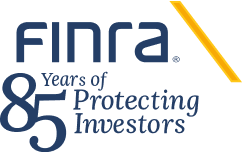NASD Urges Members to Provide Complete and Accurate Blue Sheet Submissions
| SUGGESTED ROUTING |
Senior Management |
Executive Summary
The NASD urges members to take immediate action to ensure the accuracy and completeness of trading data submitted through the NASD's electronic blue sheet system in response to regulatory inquiries. The NASD has become concerned that the quality of submissions by members is not at an acceptable level. Among the problems are improper reporting and formatting of information; missing data; timeliness; and failure to provide all of the required information. Because complete, accurate, and timely trading data properly formatted is crucial to the NASD investigative process, continued failure to meet these requirements may result in review and possible disciplinary action by the District Business Conduct and Market Surveillance Committees. In addition to addressing the various problems encountered by NASD staff with submissions of trading data, this Notice also provides members with certain clarifications concerning the submissions.
Background
Since February 12, 1989, Part VI, Section 4 of Schedule D and Section 3 of Schedule H of the NASD's By-Laws have required members to submit trading data to the NASD in a standardized, automated format when responding to an NASD investigative request. The NASD employs the same automated format developed jointly with the New York Stock Exchange (NYSE), the Securities Industry Association (SIA), and the Securities and Exchange Commission (SEC).
Notice to Members 89-70 described several problems that the NASD experienced with the accuracy of the trading information that members were submitting electronically. Several serious problems still exist with not only the accuracy of the information received by the NASD, but also the timeliness of responses and the reporting format. These problems impair the NASD's ability to use the trading information for investigative purposes and result in additional requests for information that cause unacceptable time delays and create unnecessary burdens on both NASD staff and members. Therefore, members must take immediate action to ensure that the trading data submitted to the NASD through its electronic blue sheet systems is complete and accurate.
Members must make complete and accurate reporting within specified time frames. A response is not complete unless all the required fields, detailed in Notice to Members 89-17, have been provided in the appropriate format. Members must correct any deficiencies the NASD discovers when validating the data. Continued failure to submit complete and accurate trading data on a timely basis in the proper format will result in review and probable disciplinary action by the District Business Conduct and Market Surveillance Committees.
To help members properly submit trading data, certain clarifications regarding problem areas are discussed below along with the appropriate method of submission.
Definitions, Explanations, And Modifications
Never leave this field blank.
**All Trade Corrections and Cancellations Must Be Provided**
Market Codes:
A = New York Stock Exchange
B = American Stock Exchange
C = Midwest Stock Exchange
D = Philadelphia Stock Exchange
E = Pacific Stock Exchange
F = Boston Stock Exchange
G = Cincinnati Stock Exchange
K = Chicago Board Options Exchange
L = London (OTC or Exchange)
M = Toronto Stock Exchange
N = Montreal Stock Exchange
O = Vancouver Stock Exchange
Q = POSIT
R = Nasdaq
S = Domestic (OTC)
T = Tokyo (OTC or Exchange)
U = Instinet
W = Arizona Stock Exchange
Y = Other-Domestic
Z = Other-Foreign
0 = Trade for the submitting firm or a customer of the submitting firm.
1 = Trade for a correspondent of the submitting firm or a customer of the correspondent firm.
Never leave this field blank.
Values:
1 = Trade was executed on a principal basis involving a proprietary account of the submitting firm or one of its correspondent firms.
2 = Trade was executed on an agency basis for a customer of the submitting firm or a customer of the correspondent firm. In both cases a member firm has acted as agent to the customer.
The proprietary-customer indicator must agree with the customer confirmation.
The attached matrix detailing the five different types of trade situations — principal, wholesale, inhouse, dual-agency cross, and agency — summarizes much of the information noted above.
Member's Responsibility
The submitting firm must ensure that the NASD receives answers to its requests for trading information within the standard 10 business-day time limit. Similarly, member firms are responsible for the accuracy, formatting, completeness, and timely receipt by the NASD of data submitted for them by service bureaus. Incomplete submissions do not fulfill a member's obligations to make timely reports.
Firms must submit a separate tape, diskette, or SIAC transmission for each blue sheet request they receive.
A member's blue sheet response is not complete unless all of the required fields, as detailed in Notice to Members 89-17 and elaborated on in this Notice, have been provided in the appropriate format.
All member firms clearing for introducing firms must identify to the NASD the correspondent firm for which the trading information is being submitted. To facilitate compliance, members may furnish the staff with a key to identify such correspondent firms.
Clearing firms can send copies of these correspondent firm identification lists to the following contact: Systems Administrator NASD Market Surveillance 9513 Key West Avenue Rockville, Maryland 20850 (301) 590-6410.
The NASD has established this Systems Administrator position to assist members with their submissions by responding to questions and concerns regarding the blue sheet process. Also, copies of Notices to Members 88-104, 89-17, and 89-70 are available to members without charge by contacting the Systems Administrator.
